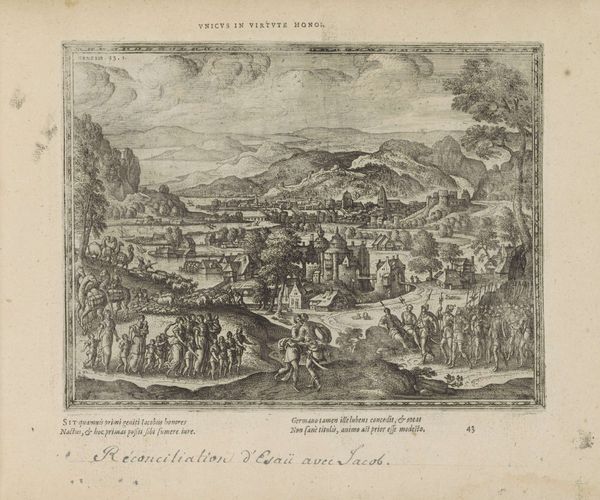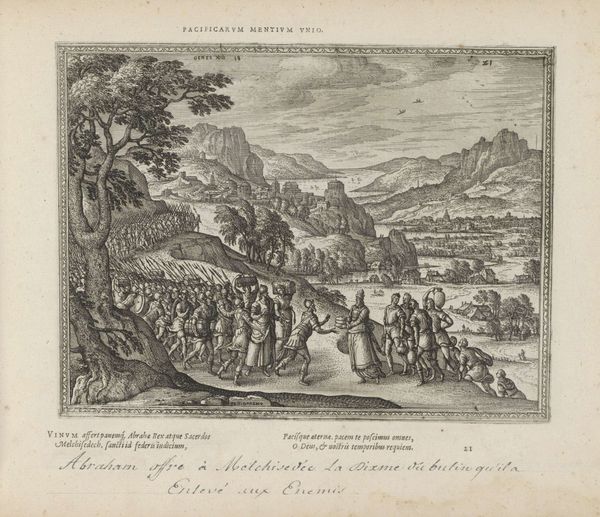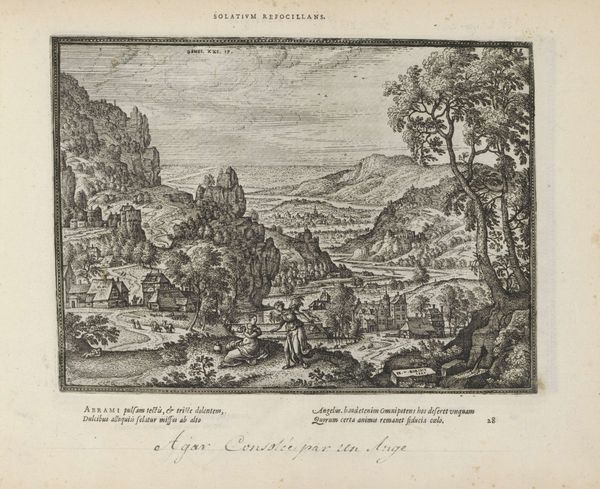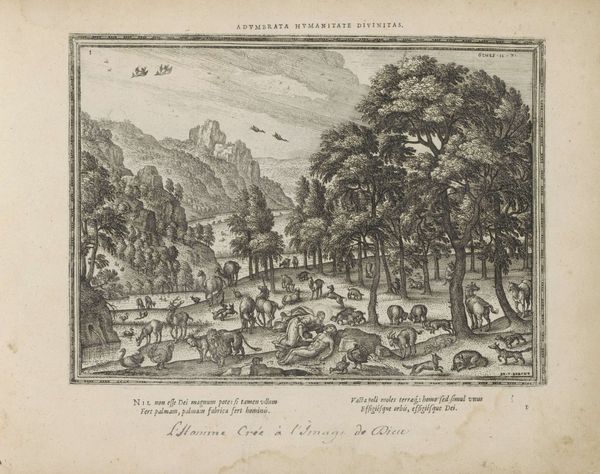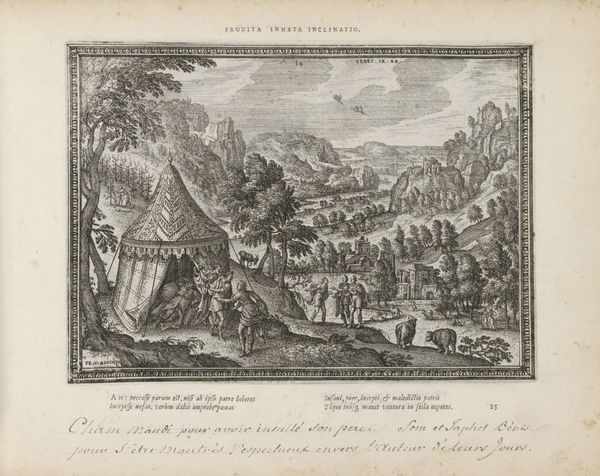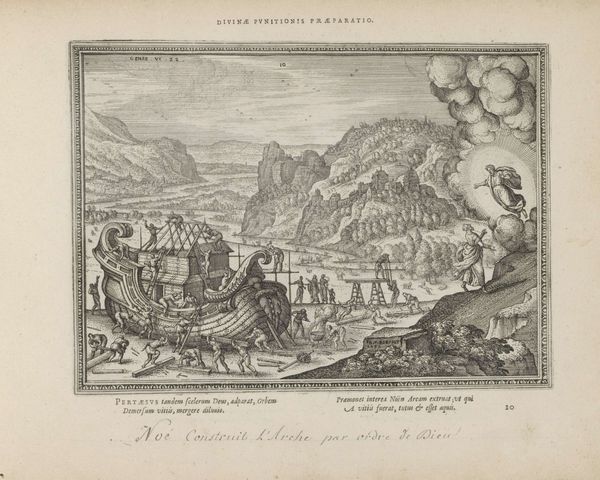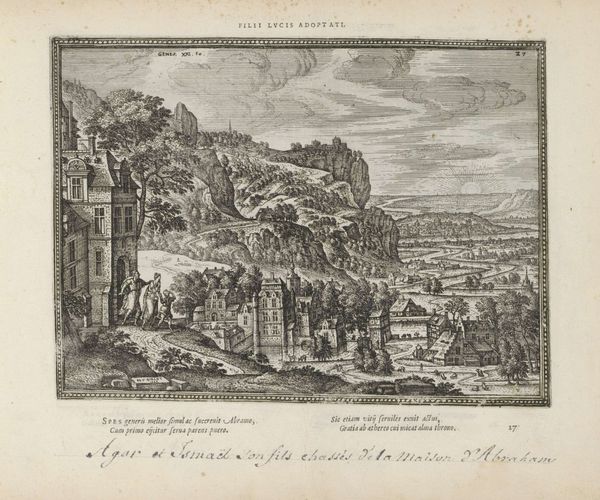
print, engraving
#
aged paper
# print
#
old engraving style
#
landscape
#
figuration
#
history-painting
#
northern-renaissance
#
engraving
Dimensions: height 186 mm, width 252 mm
Copyright: Rijks Museum: Open Domain
Curator: This is Pieter van der Borcht's print, "The Temptation of Adam and Eve," created between 1582 and 1613. It's currently housed here at the Rijksmuseum. Editor: My first impression is of a carefully constructed stage. Everything—the figures, the animals, even the landscape—seems precisely placed, almost too deliberate to evoke a true sense of paradise. Curator: The precision is a testament to the engraving process. Each line meticulously carved into the plate. Consider the labor involved in creating these intricate details. It wasn't just Van der Borcht’s hand; it was the workshop system that brought this image to life. Editor: Absolutely, and seeing Adam and Eve surrounded by animals offers an interesting perspective. Were they intended as caretakers of nature, or were they merely dominant figures within a hierarchy they never questioned, mirroring societal norms of the time? Curator: That speaks to the symbolic weight Van der Borcht loaded into the print. Notice how the act of temptation—the consumption, if you will—occurs not in isolation but within a bustling ecosystem. This connects moral failing to a wider network of production, consumption and societal norms of 16th and 17th centuries. Editor: Yes, the scene depicts much more than the traditional biblical narrative. The lush landscape reminds us of colonial ideals -the control and dominance over natural resources, over ‘paradise’. Even in depicting the “fall,” the artist perpetuates the values and the social stratification inherent in his time. What appear as 'innocent' details - elephants, bears and horses -- reflect Europe's burgeoning global reach through the Columbian Exchange. Curator: Precisely. Printmaking made imagery accessible, enabling the dissemination of these ideas. "The Temptation" thus enters a world of mass consumption, shaping how people understand religion, nature, and their place in the world. Editor: It forces us to reflect upon which stories are told and whose perspectives become the standard. Even an artwork that illustrates the "first sin" becomes a commentary on societal structures and how these impact marginalized communities. Curator: Indeed, and by examining the methods of production and its context, we can appreciate its cultural influence on early modern viewers and understand how these influences are reflected today. Editor: By unraveling the image's multilayered messages, we can start dialogues about accountability, challenging us to create a more critical understanding of inherited norms and prejudices.
Comments
No comments
Be the first to comment and join the conversation on the ultimate creative platform.





